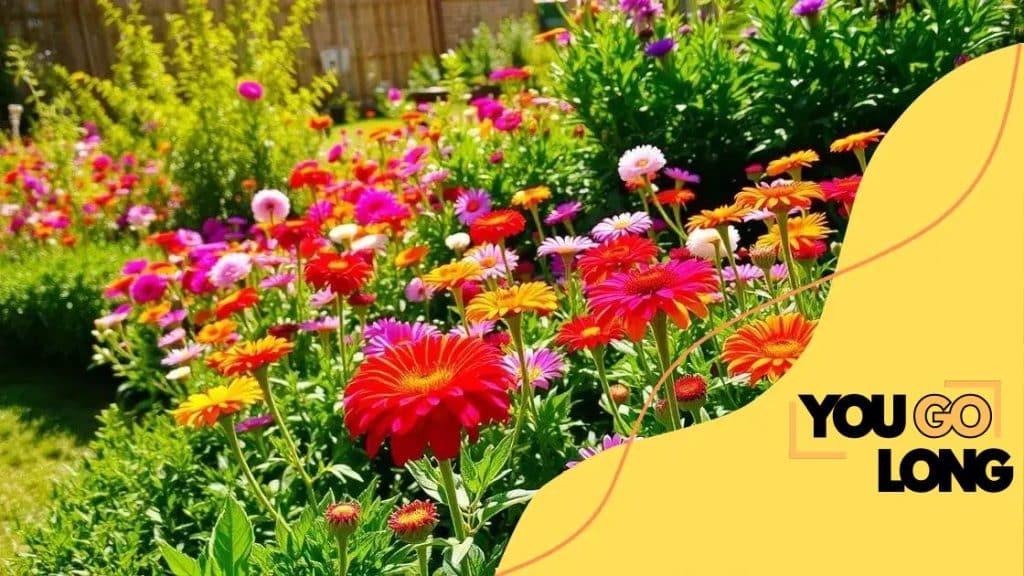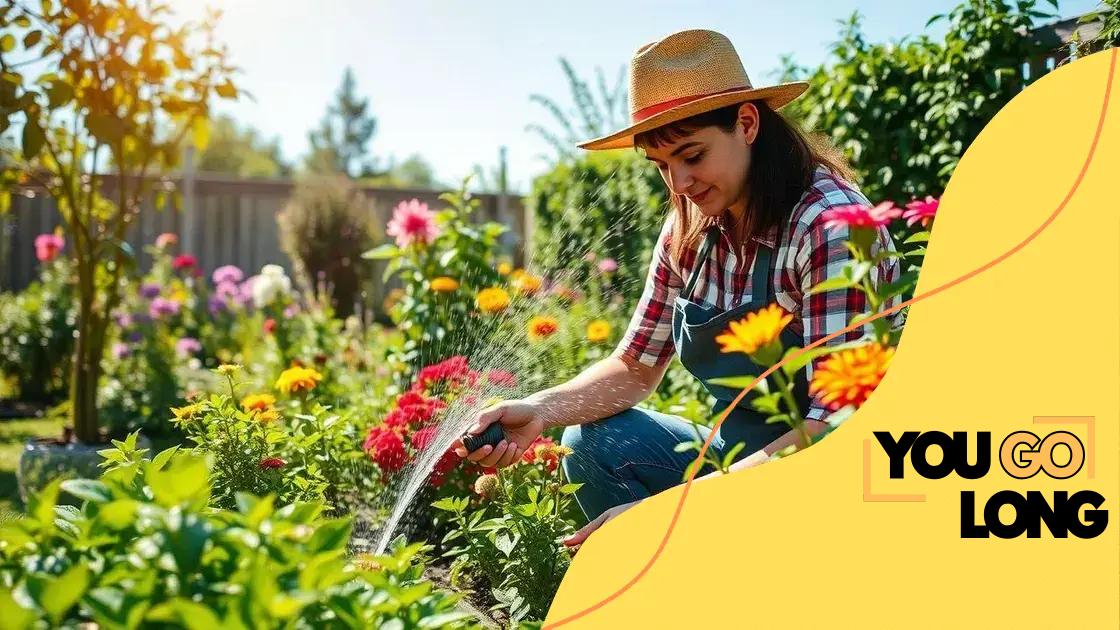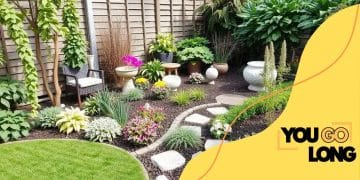The best outdoor plants for sunny gardens

Advertisement
Combining colors and textures in your garden enhances its beauty by selecting a cohesive color scheme and mixing various plant textures to create visual interest and depth.
Are you looking to enhance your outdoor space? The best outdoor plants for sunny gardens can turn any area into a vibrant oasis. From colorful blooms to lush greenery, these plants thrive under the sun. Let’s explore your options!
Top perennials for sun-filled gardens
When it comes to designing your garden, top perennials for sun-filled gardens offer a brilliant way to achieve lasting beauty with minimal effort. These plants not only thrive in bright light but also come back year after year, making them an excellent investment for any outdoor space.
Popular Sun-Loving Perennials
Here are some favorites that can brighten your sunny garden:
Advertisement
- Lavender: Known for its soothing scent and vibrant purple flowers, lavender attracts pollinators and requires little water.
- Daylilies: These resilient flowers bloom in various colors and are almost maintenance-free, perfect for busy gardeners.
- Black-eyed Susan: With their bright yellow petals, these flowers add a cheerful touch and are great for attracting butterflies.
- Sedum: This succulent variety is drought-tolerant and provides beautiful foliage and flowers, even in poor soil.
Adding these top perennials not only ensures that your garden will flourish but also simplifies the care routine. Once established, these plants can survive on minimal water, allowing you more time to enjoy your garden rather than worry about it.
Creating Layers in Your Garden
To maximize the visual impact of your plants, consider layering your perennials. Position tall varieties toward the back and shorter ones in front, ensuring every plant can be appreciated fully. Mixing different shapes and colors will also enhance the overall aesthetic. For instance, combining black-eyed Susans with lavender can create a stunning contrast that catches the eye.
Don’t forget to factor in the seasons; many perennials have distinct flowering periods. By selecting a variety of types, you can ensure your garden remains colorful throughout the growing season. This approach not only helps in fine-tuning the garden’s appearance but also plays a crucial role in supporting local ecosystems.
Advertisement
Experimenting with sun-loving perennials can lead to delightful discoveries. As you plan your garden, think about the color palette you wish to create and how each plant will contribute to it. Each perennial will bring its own charm, creating a dynamic garden that evolves with the seasons.
Overall, incorporating these perennials will not just dress your garden in color but will also ease the maintenance burden. Once planted, they will thrive with the right conditions, allowing you to reap the rewards of your gardening efforts year after year.
Best annuals to brighten your outdoor space
Incorporating best annuals to brighten your outdoor space can transform any garden or patio into a colorful haven. These plants bloom in vibrant hues, providing instant beauty and charm. Choosing the right annuals can help you create stunning displays year after year.
Vivid Choices for Your Garden
Here are some exceptional annuals that thrive in sunny conditions:
- Petunias: Available in numerous colors, petunias are known for their ability to bloom all summer long, adding rich colors to your garden.
- Marigolds: With their bright orange and yellow flowers, marigolds brighten up any space and deter pests naturally.
- Zinnias: These hardy flowers come in a variety of shapes and sizes, attracting butterflies and other pollinators to your garden.
- Impatiens: Perfect for brightening shady spots, impatiens can also thrive in partial sun, offering flexibility in garden design.
These annuals are perfect for filling gaps in your garden or adding pops of color to containers or borders. Their ability to bloom continuously makes them a favorite among gardeners. From hanging baskets brimming with petunias to garden beds splashed with vibrant marigolds, the options are versatile and exciting.
Combining Annuals for Maximum Impact
When planning your outdoor space, consider mixing these annuals for a dynamic look. Pairing contrasting colors can create a stunning visual effect. For example, a combination of zinnias and marigolds can draw the eye while attracting beneficial insects.
Another strategy is to use annuals in clusters, allowing their colors to pop against lush green foliage. This approach not only looks attractive but also helps to create a more natural garden feel. Additionally, experimenting with different heights can add depth to your plantings, ensuring that each blossom gets its moment in the sun.
Maintaining these annuals is relatively straightforward, requiring regular watering and occasional deadheading to encourage more blooms. Whether in a pot on your balcony or as part of a larger garden design, these plants are sure to deliver joy and light to your space.
How to care for sun-loving plants

Caring for sun-loving plants can be rewarding and enjoyable. These plants thrive in bright light, adding vibrancy to your garden. However, understanding their needs is essential for their growth and health.
Watering Techniques
Proper watering is crucial for sun-loving plants. During hot summer months, these plants may require more water due to increased evaporation. It’s important to water deeply and less frequently, encouraging roots to grow strong. Morning is the best time to water as it allows plants to absorb moisture without risking fungal diseases.
- Water at the base of the plant to avoid wetting the leaves.
- Check the soil moisture before watering; it should be dry an inch down.
- Use mulch to retain moisture and keep the soil cool.
In addition to watering techniques, choosing the right soil is important for healthy sun-loving plants. A well-draining soil mix can prevent root rot and encourages growth. Look for soils enriched with organic matter to provide essential nutrients.
Fertilization Tips
Fertilizing is also essential for maintaining vibrant blooms. Using a balanced fertilizer can help support growth, especially for annuals and perennials planted in nutrient-poor soils. Generally, a slow-release fertilizer in the spring will provide nutrients throughout the growing season. Remember to follow the instructions on fertilizer packages to avoid over-fertilization, which can harm the plants.
Besides watering and fertilizing, keeping an eye out for pests and diseases can safeguard your plants. Regularly inspecting your sun-loving plants means you can catch problems early. Signs of distress like yellowing leaves or stunted growth may indicate issues.
Pruning is another important step for care. Trimming dead blooms or leaves can encourage new growth, prolonging the lifespan of the plant. Maintaining your garden not only keeps it looking lovely but also enhances the health of each plant.
With consistent care, sun-loving plants will flourish, creating a beautiful and inviting outdoor space. By implementing these simple strategies, you’ll enjoy the bright colors and delightful fragrances that these plants bring.
Creating a stunning garden layout
Creating a stunning garden layout involves careful planning and creativity. A well-thought-out design can turn your outdoor space into a beautiful sanctuary. By considering light, plant heights, and colors, you can develop a layout that is both functional and visually appealing.
Understanding Light and Space
First, it’s important to assess how much sunlight different areas of your garden receive. Most sun-loving plants thrive in full sun for at least six hours a day. Observe the sunlight patterns throughout the day and plan your layout accordingly. For shaded areas, consider plants that can thrive with less light.
- Identify sun and shade zones in your garden.
- Use taller plants at the back of beds and shorter ones at the front.
- Mix perennials and annuals for continuous color.
Next, think about the spacing of your plants. Proper spacing allows for healthy growth, air circulation, and easy maintenance. It’s crucial to check the specific requirements for each plant to avoid overcrowding.
Incorporating Color and Texture
Color plays a significant role in a stunning garden layout. Choose a color scheme that complements your home and personal style. You might opt for a monochromatic scheme using varying shades of one color, or a contrasting palette that pops. Using plants with different textures also adds visual interest, enhancing the overall appeal.
Consider creating focal points within your garden, such as a vibrant flower bed, ornamental grasses, or a decorative bench. These elements can guide the eye and create harmony in your space. Incorporating paths and borders with stones or mulch can also enhance the layout and make it easy to navigate.
When planning your layout, it’s beneficial to sketch your garden design on paper or use garden design software. This process allows you to visualize your ideas and make adjustments before planting. Think about the heights and blooming times of your plants to ensure a dynamic look across seasons.
Once your design is complete, you can start planting with confidence. A well-planned garden layout not only looks beautiful but also provides a peaceful retreat for relaxation. By carefully considering each aspect, from light to color, your outdoor space will flourish.
Combining colors and textures in your garden
Combining colors and textures in your garden can create a visually stunning and harmonious landscape. Using various plants, you can enhance the aesthetic appeal of your outdoor space. A thoughtful selection of flowers, foliage, and structural plants will make your garden a unique masterpiece.
Choosing a Color Scheme
Start by deciding on a color scheme that reflects your personality. You can opt for cool colors like blues and purples for a calming effect, or warm colors like reds and yellows for a vibrant look. Mixing complementary colors can also create beautiful contrast, making each plant stand out.
- Monochromatic schemes: Use different shades of the same color for a unified look.
- Analogous schemes: Combine colors next to each other on the color wheel for a harmonious feel.
- Complementary schemes: Pair colors opposite each other on the color wheel for striking contrast.
When selecting plants, consider their blooming times as well. This way, your garden remains colorful throughout the seasons. For example, planting early bloomers like crocuses can be followed by summer flowers like daylilies, which keeps the garden lively.
Incorporating Texture
The texture of plants is just as important as their color. Mixing plants with different leaf shapes and sizes can add depth and interest to your garden. For instance, combining soft, feathery ferns with bold, structural plants like ornamental grasses creates a dynamic visual experience.
Consider adding elements like stones or mulch to complement the overall feel of your garden. These features can provide contrast to soft plant textures and enhance the overall beauty. Also, using differing heights of plants can create layers, further emphasizing the texture within your garden.
Experimenting with colors and textures can be a fun process. Take time to organize your plants in various arrangements until you find the combination that pleases you. Visiting local gardens or looking at landscape designs online can also provide inspiration. Embrace creativity, and soon you will have a garden that reflects your unique style.
FAQ – Common Questions About Combining Colors and Textures in Your Garden
What is the best way to choose a color scheme for my garden?
Consider using complementary colors or a monochromatic scheme to create a unified and attractive look.
How do I mix textures effectively in my garden design?
Combine plants with varying leaf shapes and sizes, like soft ferns and bold grasses, to add depth and interest.
Should I consider the blooming times of plants?
Yes, planning for different blooming times ensures that your garden remains colorful and lively throughout the seasons.
How can I create focal points in my garden?
Use standout plants or decorative features to draw attention and provide visual interest within your garden layout.





